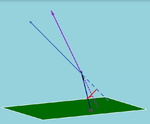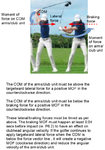WILDTHING
Well-known member
- Joined
- Sep 16, 2018
- Messages
- 893
- Reaction score
- 360
- Handicap
- 15
Thanks for the added video link! Anyone else with video or website info links please share, I’m trying to get as much information as I can. During my testing I seem to be a Rear post, Side-cover or cover R hand grip, for ground reaction forces I believe i’m primarily a glider (horizontal force), and somewhat of a launcher (vertical force). If anyone knows your pros that have a similar profile let me know, I’d like to watch slow motion swings. Thanks all!
Remember that 'Gliding' and 'breaking' is only a small power source and normally 'peaks' during transition or just very early in the downswing . The 'spinner' type of peak power source happens from P4-P5 , while the vertical 'peak' happens from P5-P6.
The gliding, spinning and launching has to happen in sequence (ie. the kinetic sequence) and not too late in the downswing. If you try and glide/spin/launch too late in the downswing there is not enough time left for its effect to reach the hands and apply the forces needed to create clubhead speed before impact.






